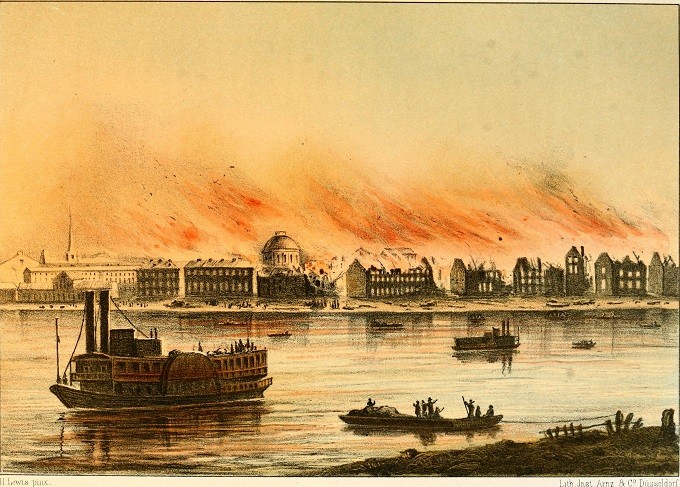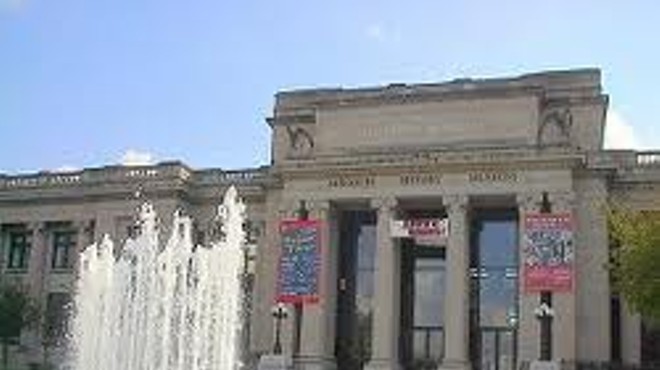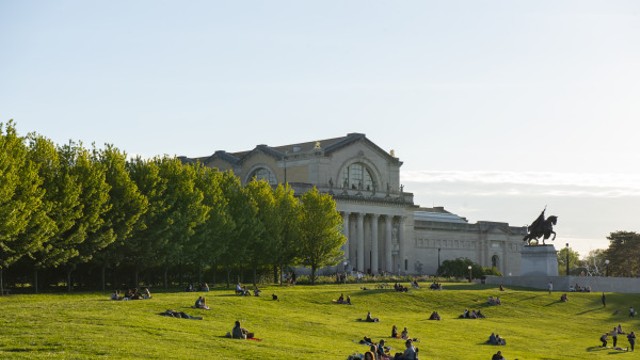This is a past event.

A German illustration of the St. Louis Fire of 1849.
Christopher Gordon
Like many older cities, St. Louis has had good years and bad years. But 1849 was clearly the worst the city ever survived. Settlers were streaming into town, which was the last place to get supplies before continuing on into the vast unknown of the western territories. The influx of people strained St. Louis' limited infrastructure, and helped spread disease like wildfire (cholera would kill perhaps ten percent of the population that year alone). Speaking of wildfire, in mid-May the steamboat The White Cloud caught fire while moored at the bustling riverfront. It broke loose and set fire to other watercraft, which then provided a route for the flames to spread to the city itself. Before it was all over, more than 400 buildings were destroyed, making the St. Louis Fire of 1849 the most destructive in our city's history. Christopher Gordon, the Missouri History Museum's director of library and collections, researched this year of woe using contemporary publications, citizens' diaries and private letters to get a complete picture of St. Louis' most dire year. His book Fire, Pestilence, and Death: St. Louis, 1849 recounts the story of St. Louis' near demise and the unshakable optimism of its people, who were convinced things had to get better at some point. Gordon discusses Fire, Pestilence, and Death at 7 p.m. Tuesday, February 13, at the Missouri History Museum (Lindel Boulevard and DeBaliviere Avenue; www.mohistory.org). Admission is free.
— Paul Friswold
Nearby
-
0.06 miles
-
0.06 miles
-
0.16 miles
-
0.16 miles
-
0.18 miles




